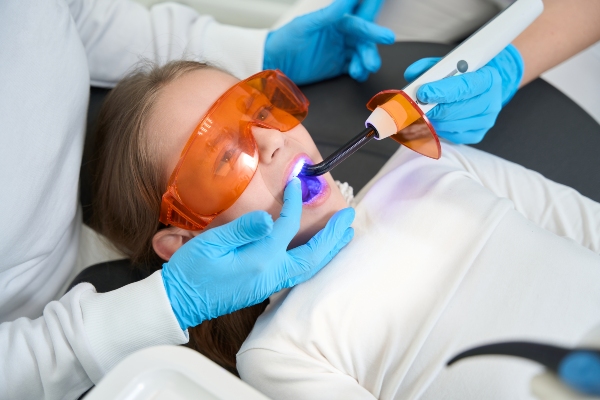What Ages Does a Kid Friendly in Richmond Treat?

Children’s teeth develop and grow fairly rapidly, so it is important to take them to a kid friendly dentist in Richmond every six months. Doing so allows the dentist to catch any potentially damaging changes early on and correct or prevent oral issues. At what age is it appropriate to switch a child to a kid friendly dentist? What are some reasons dentists prohibit children of certain ages? Here are some guidelines to help determine the best ages to take children to a kid friendly dentist.
Development of the teeth
Rather than scheduling a child’s appointment to the dentist based on the age of the child, it is best to plan a visit around the age of the child’s teeth. Most kid friendly dentists prefer to see children over the age of 11 years old. This is because before a child has reached that age, primary teeth may still be present, and any permanent teeth may not have had sufficient time to calcify. According to the American Dental Association, calcification of the third molars does not even begin until a child is between seven and ten years old. The enamel on the molar crowns will be complete by the age of seven or eight, but the roots will not be complete until between the ages of nine and sixteen. Each child’s teeth will develop differently. After a child’s permanent teeth have erupted and have time to calcify is the best time to change the dental provider to a kid friendly dentist in Richmond.
Dentist training
Many dentists choose to get additional schooling in order to accept younger patients and treat them properly.
Education
A dentist usually has additional training and education to work on the primary teeth of children. Primary teeth can present special challenges and require unique tools in order to properly treat issues. Also, because children are growing, the structure of their mouths and jaws change rapidly and can necessitate a dentist with specialized schooling. This means not all kid friendly dentists are equipped to treat children under the age of 11 or whose primary teeth have not all fallen out. Children with special needs may also benefit from visiting a kid friendly dentist with advanced training.
Experience
When deciding on a dentist for an older child, it is ideal to find one who has experience with children and the knowledge and skills necessary to properly care for young teeth. This type of dentist is typically better at interacting with children and making them feel as comfortable as possible during the visit. It can be wise to wait until a child is at least 11 years old before taking them to a kid friendly dentist to avoid behavioral issues.
Conclusion
A kid friendly dentist in Richmond should treat most children over the age of 11 as long as the primary teeth are no longer present unless there are extenuating circumstances. Schedule an appointment based on the development of a child’s teeth rather than age. Make sure a dentist has experience treating children to help ensure a positive experience for the child.
Request an appointment here: https://www.grandparkwaypediatricdental.com or call Grand Parkway Pediatric Dental at (832) 579-0960 for an appointment in our Richmond office.
Check out what others are saying about our services on Yelp: Read our Yelp reviews.
Recent Posts
Dental fillings for kids are simple, straightforward procedures from pediatric dentists that help preserve teeth, promote healthy development, and prevent other issues. It is natural to be nervous about taking your child in for dental procedures, especially tooth decay treatments. In addition to knowing your child is in good hands, understanding the procedure and why…
Dental fillings for kids restore the smile for years to come. Proper aftercare and consistent oral hygiene help to ensure your child gets the most out of their fillings. Thankfully, caring for these restorations is simple and straightforward, particularly with the help of a pediatric dentist.A dental filling is a dental restoration that “fills” cavities…
Children's tooth care starts long before the first toothache, and thoughtful care helps prevent sensitivity and protect growing smiles. When toothaches or sensitivity appear, they cause worry for children and parents, but clear guidance and prompt care keep problems from escalating.Toothaches signal that something in the mouth needs attention. In children, discomfort may show up…
Dental fillings for kids provide many advantages. It is natural for parents to ensure their children’s comfort. Fillings can improve a decayed tooth’s function and appearance. It can also keep more dental decay at bay. Here are the details on how dental fillings for kids can prevent dental decay from worsening.All parents want their children…


